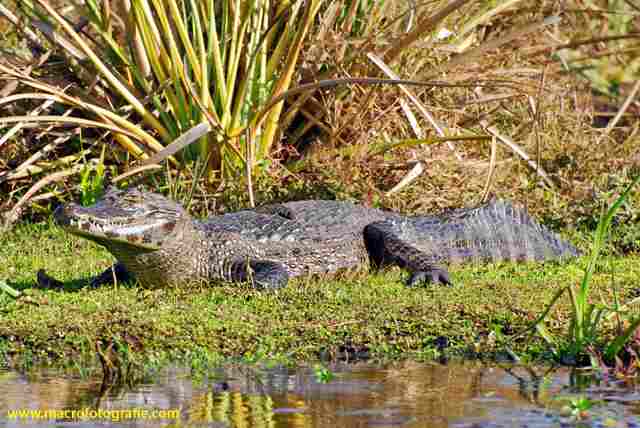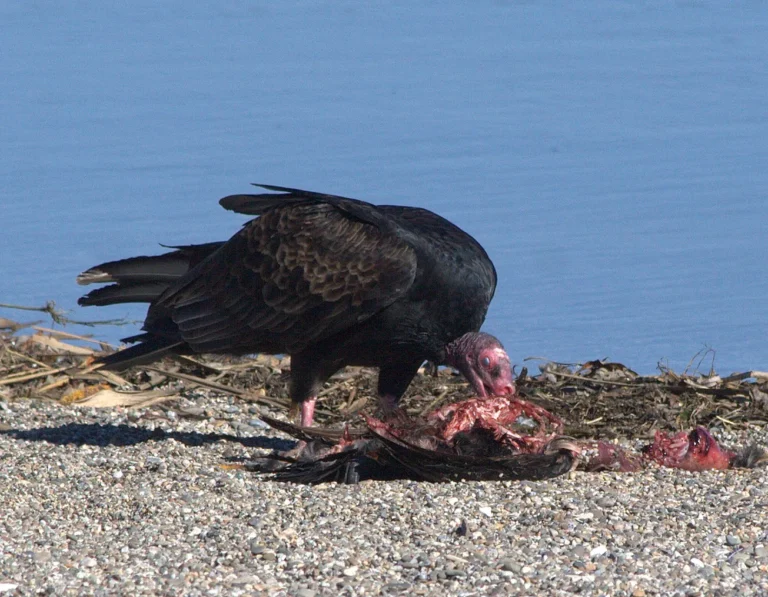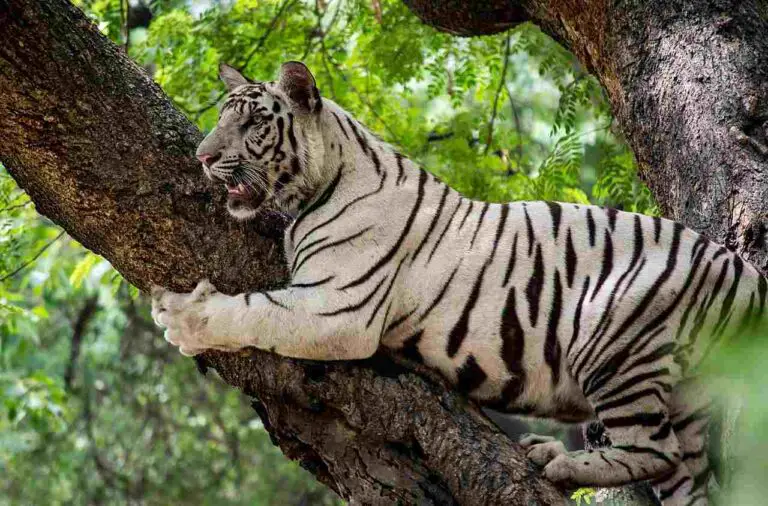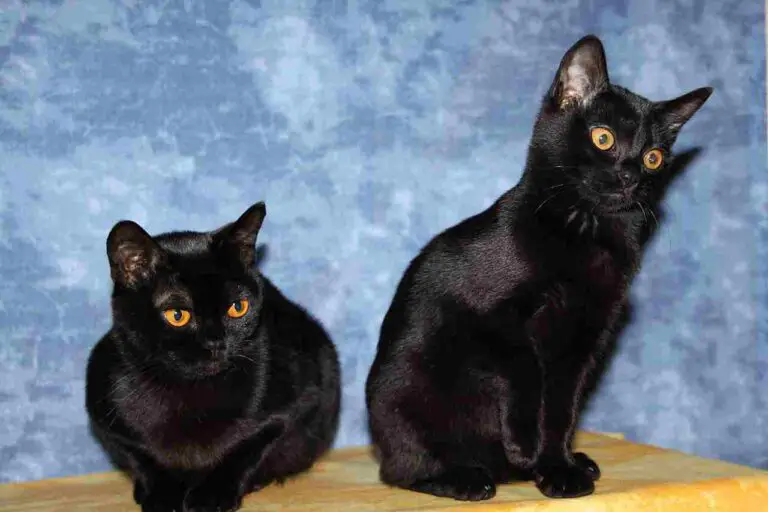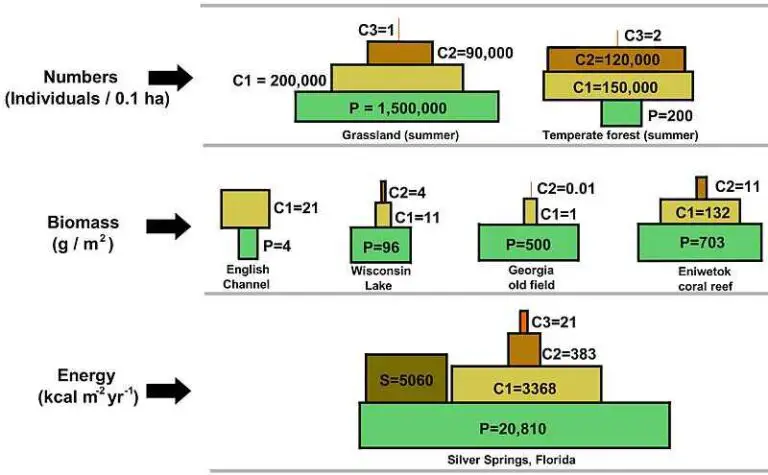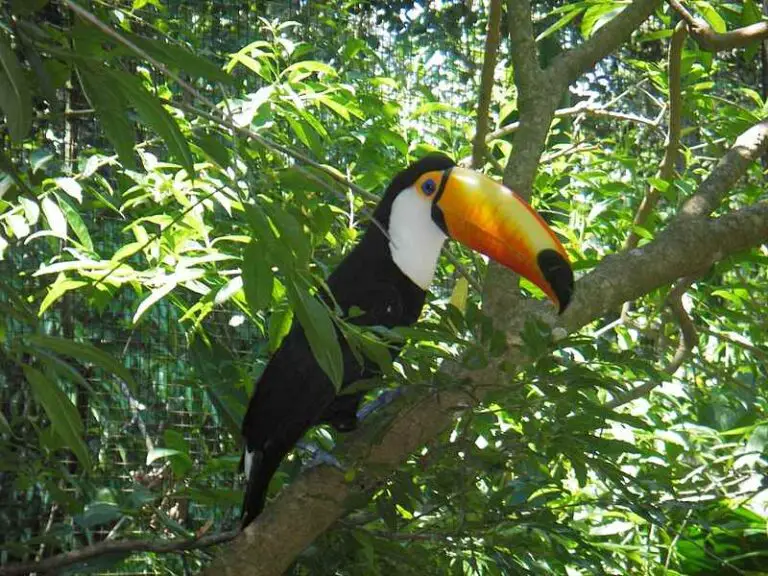Rainforest Food Web based on Trophic Relations Between Food Chains
Rainforest food web comprises of the feeding relationships or trophic links between producers and consumers in various trophic levels and food chains.
This article discusses rainforest food web based on links between organisms in multiple food chains, as follows;
1). Food Chain 1 (as a component of the Rainforest Food Web)
Trophic Level 1: Canopy trees, shrubs, epiphytes, ferns
Trophic Level 2: Leafcutter ant, capybara, locust, tapir
Trophic Level 3: Gecko, leaf frog, spider monkey, spectacled owl, viper
Trophic Level 4: Giant otter, South American bushmaster
Trophic Level 1: Producers in the Rainforest Food Web (from Chain 1)
Producers in trophic level 1 of food chain 1 are among the multiple organisms whose complex, interlinking trophic relationships, build-out to form what is known as the rainforest food web.
Here, they include canopy trees, shrubs, epiphytes and ferns.
*Canopy Trees as Producers in the Rainforest Food Web
Canopy trees in a rainforest are the tallest and largest group of trees that form the uppermost layer of the forest structure.
Examples of these trees are; mahogany, kapok tree and Brazil nut tree.
Due to their superior height, canopy trees are most exposed to solar radiation in rainforests, and have a high (relative) rate of photosynthesis. They function as primary producers.

*Shrubs as Producers in the Rainforest Food Web
The term 'shrub' can be used to generally describe small to medium-sized vascular plants that are relatively abundant in the understory layer of the forest [7].
These plants can also be described as secondary producers; because their overall photosynthetic productivity is less than that of canopy trees, which receive most of the sunlight that is incident upon the forest ecosystem.
For shrubs, the light received is relatively-low in intensity, being the few rays that penetrate through the dense overhead-vegetative cover.
Examples of rainforest plants that could be considered shrubs are; understory palms, and helioconias (which occur in the tropical rainforests of South and Central America).
*Rainforest Epiphytes
Epiphytes are plants that grow on the trunks and branches of other (sturdier) plants like trees, but which are non-parasitic and cause no harm to their host [13].
These plants obtain nutrients from accumulated debris (around their points of anchorage), as well as from rain and atmospheric gases.
Examples of epiphytes in the rainforest are bromeliads and orchids. Non-vascular plants like moss may in some cases be classified as epiphytes, because they can also grow on the surface of other plants without being parasitic.

*Ferns in the Rainforest
Ferns are shade-tolerant, non-flowering vascular plants that can be found in the understory layer of the forest.
They can grow densely in spite of low light-intensity, and contribute to the species richness of their habitat.
Trophic Level 2: Primary Consumers in the Rainforest Food Web (from Chain 1)
The primary consumers in chain 2 are; leafcutter ants, capybara, locust, and tapir. These organisms are capable of depending directly on producers (plants) for their bioenergy and nutrients.
*Leafcutter Ant as a Primary Consumer in the Rainforest Food Web
Leafcutter ants are a group of herbivorous, fungivorous arthropods that occur in rainforests.
These ants strip leaves from plants, and transport the fragments to their nests underground, where they are used for the cultivation of fungus which they consume [8].

*Capybara
Capybara is a large rodent with herbivorous feeding habits, that consumes aquatic and terrestrial plants in the rainforest, including some ferns and shrubs.
*Locust as a Rainforest Primary Consumer
Locust is a herbivorous insect that feeds on plant materials including stems and leaves of herbs and understory trees.
They are potentially destructive even in the dense rainforest, and can form large swarms of migrating, voracious feeders [10].
*Tapir
Tapirs are large mammalian herbivores that survive by browsing on leaves and consuming fruits, as well as shoots of forest plants.
Through their feeding and excretory activities, tapirs contribute to the dispersal of seeds and regeneration of vegetation in rainforests.
Trophic Level 3: Secondary Consumers in the Rainforest Food Web (from Chain 1)
The secondary consumers in chain 1 are; gecko, leaf frog, spider monkey, spectacled owl, and viper.
*Gecko as a Secondary Consumer in the Rainforest Food Web
Geckos are small reptilian animals that consume insects, including herbivores like locusts and leafcutter ants.
*Leaf Frog
Leaf frogs are small amphibians that have a primarily-insectivorous diet like geckos, feeding on insects and other invertebrates (like worms) in the rainforest.

*Spider Monkey as a Secondary Consumer in the Rainforest Food Web
The spider monkey is an arboreal primate inhabiting rainforests in Central and South America [2].
It consumes plant materials like leaves, nuts and fruits; and plays a significant role in seed dispersal, through its activities.
*Spectacled Owl
Spectacled owl is a nocturnal raptor that can be classified as a secondary consumer because it preys on small herbivorous mammals and birds (along with some fellow secondary consumers like small reptiles).
*Vipers
Vipers like the gaboon viper, can be classified secondary consumers in the rainforest. These carnivorous reptiles prey on birds, small mammals, and other reptiles
Trophic Level 4: Tertiary Consumers in the Rainforest Food Web (from Chain 1)
Tertiary consumers in chain 1 are; giant otter and South American bushmaster.
The giant otter is a carnivorous mammal that is highly versatile it its dietary and behavioral adaptation.
It can prey on both terrestrial and aquatic animals, including small caimans, catfish, piranhas and small mammals.
South American bushmaster is a venomous snake that grows longer than the gaboon viper; and is known to consume other snakes, lizards; frogs, birds and small mammals.
Summary of Trophic Levels and Functions in Rainforest Food Chain 1
In this food chain, the trophic relations are defined by a linear trend of energy-transfer that commences from the producers (canopy trees, shrubs, epiphytes, ferns) to the primary consumers (leafcutter ants, capybara, locust, tapir), and onward to the secondary consumers (gecko, leaf frog, spider monkey, spectacled owl, gaboon viper); which are prey for tertiary consumers.
Below is an outline of the functions of organisms in each trophic level;
1. Producers (Trophic Level 1): These organisms capture solar radiation and convert it into biomass and energy through photosynthesis, thereby forming the basal level of the food chain
2. Primary Consumers (Trophic Level 2): They are herbivorous and feed on plant material, such as fruits and leaves, from which they directly obtain energy from producers
3. Secondary Consumers (Trophic Level 3): These organisms prey on primary consumers, gaining nutrients and energy which they pass on to tertiary consumers
4. Tertiary Consumers (Trophic Level 4): They occupy the apex level of the food chain and prey on other consumers, thereby regulating the population sizes of organisms in lower trophic levels
2). Food Chain 2 (as a component of the Rainforest Food Web)
Trophic Level 1: Ferns, moss, canopy trees, herbs
Trophic Level 2: Howler monkey, capybara, toucan, agouti
Trophic Level 3: Spectacled owl, spider monkey, stump-tailed pygmy chameleon
Trophic Level 4: Caiman, South American bushmaster
Trophic Level 5: Boa constrictor, jaguar
Food Chain 2 in the rainforest (outlined above) demonstrates the flow of nutrients and energy across the various trophic levels.
Trophic Level 1: Producers in the Rainforest Food Web (from Chain 2)
Producers in this food chain (which is part of the rainforest food web being illustrated in this article) are; ferns, mosses, canopy trees, and herbs.
Ferns inhabit the understory and forest floor.
They are non-flowering plants and have evolved to thrive under shaded conditions, contributing diversity of the rainforest. As producers, they are also photosynthetic.
Mosses are proof of the presence of both vascular and non-vascular plants in the rainforest.
They can be described as a group of small non-vascular plants that can be found in humid, shaded zones or microhabitats within the forest, such as tree trunks and the forest floor.

Canopy trees are large, tall trees that constitute the highest vegetative level in the rainforest, also known as the canopy.
They are prominent primary producer in terms of total biomass, areal overage, and access to sunlight for photosynthesis.
Herbs in the rainforest can be described as small, flowering plants that inhabit the forest floor and understory layer. They perform photosynthesis with limited light supply, and are a food source for forest herbivores.
Trophic Level 2: Primary Consumers in the Rainforest Food Web (from Chain 2)
The primary consumers in chain 2 are; howler monkey, capybara, toucan and agouti.
Howler monkey is a herbivorous primate that can be found in the dense forest canopy-vegetation, which is characterized by a distinctive dark fur coat, and by its vocalization [5].
Food for this mammal includes, fruits and leaves, and it contributes to the dispersal of seeds.
Capybara is a herbivorous large rodent that consumes various kinds of vegetation in the rainforest.
It is remotely similar to the agouti, which is another (relatively-small) mammalian herbivore that consumes seeds, fruits and nuts (including those which fall from canopy trees); and contributes to seed dispersal.
Toucan is an iconic tropical bird with a distinctive large beak [15], adapted for feeding on fruits. They may also occasionally consume invertebrates like insects.
Trophic Level 3: Secondary Consumers in the Rainforest Food Web (from Chain 2)
Rainforest secondary consumers in chain 2 are; spectacled owl, spider monkey and stump-tailed pygmy chameleon.
Being a bird of prey, the spectacled owl consumes various small mammals, reptiles, birds; and even larger animals than itself, such as agouti, and three-toed sloth [17].
The spider monkey feeds on both plant matter and insects (primary consumers) in its arboreal habitat.
Stump-tailed pygmy chameleon consumes arthropods like insects, and is among several, small reptilian secondary consumers in the rainforest.
Trophic Level 4: Tertiary Consumers in the Rainforest Food Web (from Chain 2)
Tertiary consumers in the rainforest food web from chain 2 are; caiman and South American bushmaster.
Caiman is a crocodilian reptile that is well represented in aquatic microhabitats within the Amazon rainforest [11]. It is a tertiary consumer in its territory and preys on amphibians, other reptiles, small mammals and fish.

South American bushmaster is a venomous snake that functions as a tertiary consumer, by preying on secondary consumers like chameleons alongside various small mammals and birds.
Trophic Level 5: Quaternary Consumers in the Rainforest (from Chain 2)
Quaternary consumers in chain 2 are; boa constrictor and jaguar.
Boa constrictor is a large snake that captures prey through an ambush and squeezing/crushing technique referred to as constriction.
It inhabits various rainforest zones, and functions as an apex predator within its territory; using its formidable hunting technique to prey on a wide range of animals including other reptiles, small and medium-sized mammals, and birds.
Jaguar is a large and powerful feline that inhabits rainforests on the American continent. It hunts a wide variety of prey that include fish, aquatic and terrestrial reptiles, as well as all size-classes of mammals.
*Recurring Organisms in Chain 2
1. Canopy trees appear in both chains 1 and 2
2. Ferns are also producers in chain 1
3. The spectacled owl is a secondary consumer in both chains 1 and 2
4. South American bushmaster appears as a tertiary consumer in chains 1 and 2
These recurring organisms signify trophic links between chains 1 and 2; that build out on a large scale to form the complex ecologic network called the rainforest food web.
*Summary of Trophic Relations in Rainforest Food Chain 2
Energy flow in food chain 2, commences from the producers (ferns, moss, canopy trees, herbs), which produce chemical energy from solar energy, and transfer this energy to the primary consumers (howler monkey, capybara, toucan, agouti).
Secondary consumers (spectacled owl, spider monkey, stump-tailed pygmy chameleon) gain energy from primary consumers which they feed on; and subsequently transfer this energy to the higher-level (tertiary and quaternary) consumers (caiman, South American bushmaster, boa constrictor, jaguar).
3). Food Chain 3 (as a component of the Rainforest Food Web)
Trophic Level 1: Grass, ferns, epiphytes, understory trees
Trophic Level 2: Tapir, toucan, fruit bat, howler monkey, agouti, sloth
Trophic Level 3: Owl, spider monkey, viper
Trophic Level 4: Harpy eagle, jaguar
Food Chain 3 illustrates the interdependence, and trend of energy flow, between organisms in different trophic levels of the rainforest ecosystem. These organisms are not confined to the linear structure of the food chain, but also share trophic links to organisms in other linear sequences, so that the ultimate outcome is a complex system of interconnected organisms in a food web.
Trophic Level 1: Producers in the Rainforest Food Web (from Chain 3)
The producers in chain 3 are; grasses, ferns, epiphytes and understory trees.
Grasses occur in relatively-open, humid areas of the rainforest floor. They are herbaceous plants that serve as forage for many herbivores, as well as microhabitat for other rainforest organisms.
Ferns occur in close proximity to grasses, in shaded areas of the understory and forest floor, where they contribute to producer-diversity.
Epiphytes grow at different levels of the forest structure, in attachment to other plants. Like other producers they carry out photosynthesis and introduce biomass and energy into the ecosystem.
Understory trees are a group of small to medium-sized trees that are found beneath the topmost level of the forest (canopy). They have access to a limited amount/intensity of sunlight, and are crucial in their role toward the provision of food and microhabitat for organisms in their environment.
Trophic Level 2: Primary Consumers in the Rainforest Food Web (from Chain 3)
Primary consumers in chain 3 are; tapir, toucan, fruit bat, howler monkey, and agouti.
Tapir is a large herbivorous mammal and feeds on rainforest producers like grasses, ferns, and fruits from understory trees [4].
Toucan is a bird with a distinctive appearance, that primarily consumes fruits, which it supplements with small vertebrates and insects.
The fruit bat or flying fox is a nocturnal mammal that inhabits the rainforest canopy [1], where it feeds on nectar, pollen and fruits. It is also an active pollinator and seed-disperser.
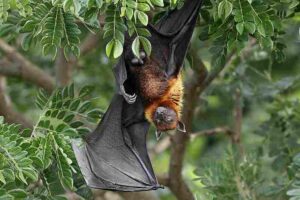
Like other primary consumers, howler monkeys consume fruits, nuts and leaves from rainforest trees. They also contribute to the widespread dispersal of seeds in their habitat.
Agoutis share a similar diet with howler monkeys; consisting of seeds, nuts and fallen fruits from understory trees.
Sloths are sluggish mammalian herbivores that consume leaves in the rainforest canopies of South and Central America [18], where they spend most of their day.
Trophic Level 3: Secondary Consumers in the Rainforest Food Web (from Chain 3)
The secondary consumers in chain 3 are; owl, spider monkey, and vipers (including any of numerous species inhabiting rainforests).
Owls prey on birds, small mammals and reptiles, many of which are primary consumers.
Spider monkeys are classified as secondary consumers due to their omnivorous habit that allows them feed on eggs, arachnids and insects, in addition to their primary plant-based diet of fruits, seeds and nuts.
Reptiles, birds and small mammals are part of the diet of (relatively-small) venomous vipers in the rainforest; which are also secondary consumers.
Trophic Level 4: Tertiary Consumers in the Food Web (from Chain 3)
Tertiary consumers in chain 3 are; harpy eagle and jaguar.
Harpy eagles are tertiary consumers by reason of their size and strength, both of which are superior to those of any other raptor within their habitat.
Hunting from the overhead vegetative canopy, these birds prey on other birds, reptiles, and mammals as large as sloths and monkeys [12]. Their activities influence the population dynamics, and adaptive trend, of organisms in lower trophic levels.
Jaguars also use their size and strength as advantages to operate as apex predators. They prey on lower consumers in both terrestrial and aquatic zones.
*Recurring Organisms from Previous Food Chain(s)
1. Ferns occur in chains 1 and 2 as well
2. Epiphytes are also producers in chain 1
3. Tapir is a herbivorous primary consumer in chain 1
4. Toucan reappears in chain 2 as a primary consumer
5. Howler monkey also occurs in chain 2
6. Agouti occurs in chain 2
7. Jaguar is a quaternary consumer in chain 2
The occurrence of jaguar as in trophic levels 5 and 4 of chains 2 and 3 respectively, is proof of the actual level of complexity of rainforest food webs; which allows organisms not only to function in multiple linear sequences (that is; chains) simultaneously, but also allows them to operate in more than one trophic level simultaneously.
*Summary of Energy Transfer Trend in the Food Chain
Energy in this food chain originates from grasses, ferns, epiphytes, and understory trees; which are the producers.
It is transferred through feeding, to the primary consumers (tapir, toucan, fruit bat, howler monkey, agouti), and subsequently to the secondary consumers (owl, spider monkey, viper).
These consumers are all potential prey for the top predators (harpy eagle, jaguar). Each trophic level and individual organism, plays a role toward the equilibrium and sustainability of the rainforest ecosystem, through various contributions such as pollination, population control, and seed dispersal.
4). Food Chain 4 (as a component of the Rainforest Food Web)
Trophic Level 1: Vines, canopy trees, shrubs
Trophic Level 2: Green iguana, macaw, capybara, agouti
Trophic Level 3: Spider monkey, two-banded chameleon
Trophic Level 4: Green anaconda, harpy eagle
Food Chain 4 represents the relationships and interconnections between producers and consumers in a rainforest ecosystem.
Trophic Level 1: Producers in the Rainforest Food Web (from Chain 4)
Producers in chain 4 are; vines, canopy trees and shrubs.
Vines are a group of climbing plants with flexible, non-woody stems, that grow on the rigid trunks of woody plants (like trees) in the rainforest, for structural support [3]. They utilize photosynthesis for growth and can produce edible fruits, seeds and leaves.
Canopy trees in the tropical rainforest are dominant plants occupying the highest vegetative layer of the canopy. They are sources of shade (form microclimate and microhabitat creation), as well as food for various organisms.
Shrubs in the rainforest are a group of low-height; woody plants which mainly occupy the understory layer. They serve as forage for some herbivores, and create microhabitat for other organisms.
Trophic Level 2: Primary Consumers
The primary consumers from chain 4 are; green iguana, macaw; capybara, and agouti.
Green iguana is a herbivorous reptile that consumes fruits, flowers and leaves [16]. Its activities contribute to the recycling of nutrients in the rainforest.
Macaw is a colorful and vibrant parrot that is found in the rainforest canopies of South and Central America, including the Amazon [14].
Its food consists of nuts, seeds, berries and fruits. Macaws play a role in the dispersal of seeds and regeneration of forest plants.
Capybara feeds on aquatic plants, fruits (including those which fall from canopy trees) and grasses.
Agoutis also consume plant materials like fallen fruits, seeds and nuts.
Trophic Level 3: Secondary Consumers in the Rainforest Food Web (from Chain 4)
The secondary consumers of rainforest food chain 4 are; spider monkey and two-banded chameleon.
Spider monkeys feed on both plant and animal matter, including herbivorous insects which can be classified as primary consumers. Because of the plant-matter in their diet, they also contribute to seed dispersal.
Two-banded chameleon is an insectivorous reptile that inhabits tropical rainforests, where it consumes insects and regulates their populations.
Trophic Level 4: Tertiary Consumers
Green anaconda is a large and non-venomous snake that captures prey by ambush and suffocation [6].
Its food comprises of turtles, birds and fish, and it may also prey on terrestrial mammals like the agouti. It usually functions as an apex predator in its habitat.

Harpy eagles are also apex consumers that help in the regulation of rainforest organic (prey) populations.
*Recurring Organisms (that Link Out to Form the Rainforest Food Web)
1. Canopy trees can be found in chains 1 and 2 as well
2. Shrubs occur also in chain 1
3. Capybara is also a primary consumer in chains 1 and 2
4. Agouti occurs in chains 2 and 3
5. Spider monkey is a secondary consumer in chains 1, 2, and 3
6. Harpy eagle is an apex predator in chain 3
*Summary of Trophic Relations in Chain 4
The trophic relations in food chain 4 are illustrative of the transfer of energy and nutrients from vines, canopy trees, shrubs (producers) to the rainforest primary consumers (macaw, capybara, agouti), and subsequently to the secondary consumers (spider monkey, green iguana, two-banded chameleon).
Green anaconda and harpy eagle occur at the top of the chain, where they have the advantage of low-vulnerability to predation, as well as a wide range of dietary choices.
5). Food Chain 5 (as a component of the Rainforest Food Web)
Trophic Level 1: Lianas, epiphytes, understory trees, moss, aquatic macrophytes
Trophic Level 2: Fruit bat, toucan, grasshopper
Trophic Level 3: Leaf frog, gecko, gaboon viper
Trophic Level 4: Genet, civet
Trophic Level 5: African crowned eagle, Congo dwarf crocodile
Food Chain 5 represents the trophic relationships occurring between organisms in a diverse rainforest ecosystem in the Congo basin of Central Africa. Notice that this differs from other food chains in this article, whose organisms are mostly from South and Central America.
This instance is used to show how the diversity of rainforests creates immense opportunities for trophic interaction and energy transfer, even when dealing (hypothetically) with species from different geographic localities.
Trophic Level 1: Producers in the Rainforest Food Web (from Chain 5)
Producers in chain 5 are; lianas, epiphytes, understory trees, mosses, and aquatic macrophytes.
Lianas are a type of vine with woody stems [9], that also climbs on the trunks of trees for support and to access sunlight through the forest canopy.
They function as natural carbon sinks, contributing to the sustenance of carbon and oxygen cycles in the rainforest. They may also produce fruits, seeds and other parts that are edible to some herbivores.

Epiphytes grow non-parasitically in attachment to the branches and trunks of other rainforest producers.
Understory trees fall behind the canopy trees of the rainforest in terms of height and mass. They grow with less sunlight that these canopy trees, and constitute a major microhabitat as well as food source, due to their reachability for many forest animals.
Mosses are non-vascular, ground-level plants that grow in moist areas of the forest floor, on soil, rocks, as well as on the surfaces of tree trunks.
These plants serve as microhabitat for some organisms, food source for others, and as part of the overall plant-biodiversity of the forest.
Aquatic macrophytes are confined to rivers, streams, lakes and ponds that occur within the forest. They are non-microscopic, and may be either partially or entirely submerged in water.
Herbivores like capybara, as well as some fish can feed on aquatic macrophytes.
Trophic Level 2: Primary Consumers in the Rainforest
Primary consumers in chain 5 are; fruit bat, toucan, and grasshopper.
The fruit bat and toucan both inhabit the high forest canopy and understory, where they consume fruits, pollen and nectar.
Fruit bats facilitate pollination through nectar and pollen-feeding. Toucans may occasionally feed on insects. These two animals play a role in the dispersal of seeds.
The grasshopper is a herbivorous insect that could be found in the understory and close to the forest floor. It grazes on grass, shrub leaves, and other forms of plant matter, and serves as a food source for reptilian secondary consumers like geckos.
Trophic Level 3: Secondary Consumers in the Rainforest
Secondary consumers in chain 5 are; leaf frog, gecko, and gaboon viper. They are all ectothermic (amphibians and reptiles).
The leaf frog is arboreal and feeds mainly on insects in forest trees. Their activities help regulate the populations of these insects.
Geckos are small lizards, and consume small invertebrates including various insects.
The gaboon viper is highly venomous and preys om birds and small mammals. Within the immediate boundaries of their microhabitat, they often operate as apex predators; but become secondary consumers when evaluated on a holistic scale; due to the presence of larger snakes.
Trophic Level 4: Tertiary Consumers
Tertiary consumers in chain 5 are; genet and civet, both of which are indigenous to African rainforests.
Genet is a small carnivorous mammal that consumes birds, reptiles, insects, and other mammals like rodents.

Civet is a nocturnal mammal that feeds in an opportunistic and omnivorous manner.
Its diet comprises of insects, small mammals, reptiles, (in some cases) carrion, as well as fruits.
Trophic Level 5: Quaternary Consumers in the Rainforest Food Web (from Chain 5)
The quaternary consumers of chain 5 are; African crowned eagle and Congo dwarf crocodile.
African crowned eagle is a large bird of prey that can capture and consume other birds, small mammals including antelopes and monkeys.
It is equipped with sheer size and superior strength compared to other raptors in its territory, and therefore functions as an apex predator.
Congo dwarf crocodile is a relatively-small crocodilian reptile that inhabits water bodies in the Congo rainforest basin/region. Its food includes small mammals, amphibians, other reptiles, and fish.
*Recurring Organisms
1. Epiphytes occur as producers in chains 1 and 3
2. Understory trees are also present in chain 3
3. Mosses occur in chain 2
4. Fruit bat is a primary consumer in chain 3
5. Toucan occurs in chains 2 and 3
6. Leaf frog and gecko are also secondary consumers in chain 1
*Summary of Trophic Relations in Chain 5
Energy and nutrient transfer begins with the producers (lianas, epiphytes, understory trees, moss, aquatic macrophytes), which are food sources for the primary consumers (fruit bat, toucan, grasshopper).
Secondary consumers (leaf frog, gecko, gaboon viper) can prey on some primary consumers (depending on the particular secondary consumer involved).
They in turn are prey for the tertiary consumers (genet, civet).
All consumers are vulnerable to predation from the apex organisms (African crowned eagle, Congo dwarf crocodile).
Conclusion
The rainforest food web is an ecological model of energy and nutrient transfer, that results from trophic interactions between multiple organisms in different trophic levels and 'food chains', such as those outlined below;
Food Chain 1: Canopy trees, shrubs, epiphytes, ferns (Trophic Level 1)→leafcutter ant, capybara, locust, tapir (Trophic Level 2)→gecko, leaf frog, spider monkey, spectacled owl, viper (Trophic Level 3)→giant otter, South American bushmaster (Trophic Level 4)
Food Chain 2: Ferns, moss, canopy trees, herbs (Trophic Level 1)→howler monkey, capybara, toucan, agouti (Trophic Level 2)→spectacled owl, spider monkey, stump-tailed pygmy chameleon (Trophic Level 3)→caiman, South American bushmaster (Trophic Level 4)→boa constrictor, jaguar (Trophic Level 5)
Food Chain 3: Grass, ferns, epiphytes, understory trees (Trophic Level 1)→tapir, toucan, fruit bat, howler monkey, agouti, sloth (Trophic Level 2)→owl, spider monkey, viper (Trophic Level 3)→harpy eagle, jaguar (Trophic Level 4)
Food Chain 4: Vines, canopy trees, shrubs (Trophic Level 1)→green iguana, macaw, capybara, agouti (Trophic Level 2)→spider monkey, two-banded chameleon (Trophic Level 3)→green anaconda, harpy eagle (Trophic Level 4)
Food Chain 5: Lianas, epiphytes, understory trees, moss, aquatic macrophytes (Trophic Level 1)→fruit bat, toucan, grasshopper (Trophic Level 2)→leaf frog, gecko, gaboon viper (Trophic Level 3)→genet, civet (Trophic Level 4)→ African crowned eagle, Congo dwarf crocodile (Trophic Level 5)
References
1). Abdullah, M. T.; Hall, L. S. (1997). "Abundance and distribution of fruit bats and other mammals in the tropical forest canopy in Borneo." Sarawak Museum Journal 72:63-74. Available at: https://www.researchgate.net/publication/257409440_Abundance_and_distribution_of_fruit_bats_and_other_mammals_in_the_tropical_forest_canopy_in_Borneo. (Accessed 30 June 2023).
2). Asensio, N.; Murillo-Chacon, E.; Schaffner, C. M.; Aureli, F. (2017). "The effect of roads on spider monkeys’ home range and mobility in a heterogeneous regenerating forest." Biotropica 49(4). Available at: https://doi.org/10.1111/btp.12441. (Accessed 30 June 2023).
3). Carrasco-Urra, F. A.; Gianoli, E. (2009). "Abundance of climbing plants in a southern temperate rain forest: Host tree characteristics or light availability?" Journal of Vegetation Science 20(6):1155 - 1162. Available at: https://doi.org/10.1111/j.1654-1103.2009.01115.x. (Accessed 1 July 2023).
4). Chalukian, S. C.; de Bustos, S.; Lizarraga, L. (2013). "Diet of lowland tapir (Tapirus terrestris) in El Rey National Park, Salta, Argentina." Integrative Zoology 8(1):48-56. Available at: https://doi.org/10.1111/j.1749-4877.2012.12009.x. (Accessed 30 June 2023).
5). da Cunhan R.; Goncalves, D. A.; Holzmann, I.; Kitchen, D. M. (2015). "Production of Loud and Quiet Calls in Howler Monkeys." Available at: https://doi.org/10.1007/978-1-4939-1957-4_13. (Accessed 30 June 2023).
6). Dehghani, M.; Trojovsky, P.; Malik, O. P. (2023). "Green Anaconda Optimization: A New Bio-Inspired Metaheuristic Algorithm for Solving Optimization Problems." Biomimetics 8(1):121. Available at: https://doi.org/10.3390/biomimetics8010121. (Accessed 30 June 2023).
7). Dyer, L. A.; Letourneau, D. K.; Chavarria, G. V.; Salazar, D. (2010). "Herbivores on a dominant understory shrub increase local plant diversity in rain forest communities." Ecology 91(12):3707-3718. Available at: https://doi.org/10.1890/08-1634.1. (Accessed 30 June 2023).
8). Garrett, R. W.; Carlson, K. A.; Goggans, M. S.; Nesson, M. H.; Shepard, C. A.; Schofield, R. M. S. (2016). "Leaf processing behaviour in Atta leafcutter ants: 90% of leaf cutting takes place inside the nest, and ants select pieces that require less cutting." The Royal Society, Royal Society Open Science 3(1):150111. Available at: https://doi.org/10.1098/rsos.150111. (Accessed 30 June 2023).
9). Jiménez-Castillo, M.; Lusk, C. (2012). "Vascular performance of woody plants in a temperate rain forest: Lianas suffer higher levels of freeze-thaw embolism than associated trees." Functional Ecology 27(2):403-412. Available at: https://doi.org/10.1111/1365-2435.12045. (Accessed 30 June 2023).
10). Lecoq, M. (1991). "The Migratory Locust in Africa and in Madagascar." The Orthopterists' Society series of field guides. 32p. Available at: https://www.researchgate.net/publication/235695424_The_Migratory_Locust_in_Africa_and_in_Madagascar. (Accessed 30 June 2023).
11). Marioni, B.; Dutra-Araújo, D.; Villamarin, F.; Da Silveira, B. (2013). "AMAZONIAN ENCOUNTERS WITH FOUR CROCODILIAN SPECIES IN ONE SINGLE NIGHT!." Available at: https://www.academia.edu/17098337/AMAZONIAN_ENCOUNTERS_WITH_FOUR_CROCODILIAN_SPECIES_IN_ONE_SINGLE_NIGHT_. (Accessed 30 June 2023).
12). Miranda, E. (2018). "Prey Composition of Harpy Eagles ( Harpia harpyja ) in Raleighvallen, Suriname." Tropical Conservation Science 11(1):194008291880078. Available at: https://doi.org/10.1177/1940082918800789. (Accessed 30 June 2023).
13). Nieder, J.; Prosperi, J.; Michaloud, G. (2001). "Epiphytes and their contribution to canopy diversity." Plant Ecology 153(1):51-63. Available at: https://doi.org/10.1023/A:1017517119305. (Accessed 30 June 2023).
14). Olah, G.; Heinsohn, R.; Brightsmith, D.; Espinoza, J. R.; Peakall, R. (2016). "Validation of non-invasive genetic tagging in two large macaw species (Ara macao and A. chloropterus) of the Peruvian Amazon." Springer, Conservation Genetics Resources 8(4):499-509. Available at: https://doi.org/10.1007/s12686-016-0573-4. (Accessed 30 June 2023).
15). Seki, Y.; Benson, D. J.; Meyers, M. A. (2006). "The toucan beak: Structure and mechanical response." Materials Science and Engineering C 26(8):1412-1420. Available at: https://doi.org/10.1016/j.msec.2005.08.025. (Accessed 30 June 2023).
16). van Marken Lichtenbelt, W. D. (1993). "Optimal foraging of a herbivorous lizard, the green iguana in a seasonal environment." Oecologia. 1993 Aug;95(2):246-256. Available at: https://doi.org/10.1007/BF00323497. (Accessed 30 June 2023).
17). Voirin, B.; Kays, R.; Lowmann M. D.; Wikelskin M. (2009). "Evidence for Three-Toed Sloth ( Bradypus variegatus ) Predation by Spectacled Owl (Pulsatrix perspicillat." Edentata 8-10:15-20. Available at: https://doi.org/10.1896/020.010.0113. (Accessed 30 June 2023).
18). Voirin, B.; Scriba; M. F.; Martinez-Gonzalez, D.; Vyssotski, A. L.; Wikelski, M.; Rattenborg, N. C. (2014). "Ecology and neurophysiology of sleep in two wild sloth species." Sleep. 2014 Apr 1;37(4):753-61. Available at: https://doi.org/10.5665/sleep.3584. (Accessed 30 June 2023).
